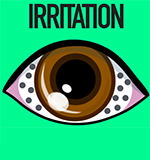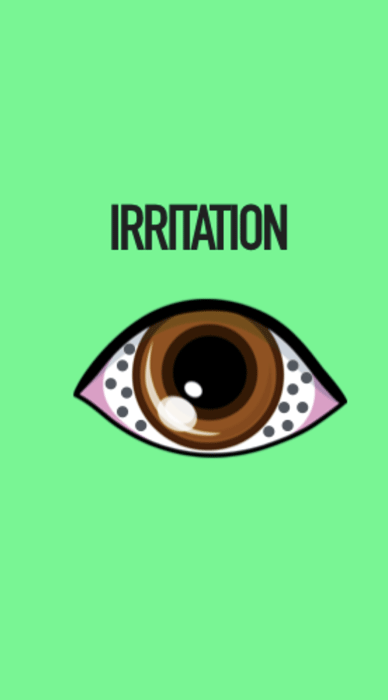



The TFOS DEWS II report redefines dry eye as:
" A multifactorial disease of the ocular surface characterised by a loss of homeostasis of the tear film, and accompanied by ocular symptoms, in which tear film instability and hyperosmolarity, ocular surface inflammation and damage, and neurosensory abnormalities play etiological roles."

The TFOS DEWS II report redefines dry eye as:
" A multifactorial disease of the ocular surface characterised by a loss of homeostasis of the tear film, and accompanied by ocular symptoms, in which tear film instability and hyperosmolarity, ocular surface inflammation and damage, and neurosensory abnormalities play etiological roles."









These days, many of us have jobs that require us to work with computer screens for hours at a time. This can put a real strain on your eyes. Eye problems caused by computer-use fall under Computer Vision Syndrome (CVS). CVS isn’t one specific problem, Instead, it includes a whole range of problems due to eye strain and discomfort.
There's no proof, however, that computer-use causes any long-term damage to the eyes.
You may notice:
- Blurred vision
- Double vision
- Dry, red eyes
- Eye irritation
- Headaches
- Neck or back pain


These days, many of us have jobs that require us to work with computer screens for hours at a time. This can put a real strain on your eyes. Eye problems caused by computer-use fall under Computer Vision Syndrome (CVS). CVS isn’t one specific problem, Instead, it includes a whole range of problems due to eye strain and discomfort.
There's no proof, however, that computer-use causes any long-term damage to the eyes.
You may notice:
- Blurred vision
- Double vision
- Dry, red eyes
- Eye irritation
- Headaches
- Neck or back pain


A Tear film analysis is required to check tear hyperosmolarity and ocular surface inflammation. We can accurately and reliably measure tear osmolarity and matrix metalloproteinase 9 (MMP9), a marker of inflammation and tissue breakdown in your tears

Lacrimal glands produce the aqueous layer of the tear film and tests like the “tear film break up time (T-BUT)” and Schirmer’s tests evaluate the deficiency of this layer which is an important cause of aqueous-deficiency dry eye

Meibography allows visualisation of morphology of the glands and plays an important role in assessing tear film dimensions and tear film instability. Lipid layer disturbances are more pronounced when meibography is abnormal leading to evaporative dry eye


A Tear film analysis is required to check tear hyperosmolarity and ocular surface inflammation. We can accurately and reliably measure tear osmolarity and matrix metalloproteinase 9 (MMP9), a marker of inflammation and tissue breakdown in your tears.

Lacrimal glands produce the aqueous layer of the tear film and tests like the “tear film break up time (T-BUT)” and Schirmer’s tests evaluate the deficiency of this layer which is an important cause of aqueous-deficiency dry eye

Meibography allows visualisation of morphology of the glands and plays an important role in assessing tear film dimensions and tear film instability. Lipid layer disturbances are more pronounced when meibography is abnormal leading to evaporative dry eye
Testimonials
Hello..this is Mr Sameer Bhambere from thane. One month back my mom underwent the cataract operation for both her eyes within the span of 2 months. Done by Dr Nikhil Negular along with his efficient n prompt team. The experience was amazing n soothing for my mom. Her reaction was that I didn't even come to know when it started n ended. Dr nikhil took me in encrossed me in some talks by asking questions n was doing something thinking that he is preparing for the operation she too kept chatting but in 10 minutes he told my mom maushi zhale and she was amazed. A very spectaculared n well handled it was for us as with senior citizens operation word is tuff to be handled, but he made it ease for her. Overall a well equipped, clean, efficient set up lead by Dr Nikhil Negular and will go a long way. The knowledge of new technologies and standards carried him make an impact thus creating further faith with his down to earth n spectacular personality. I and my parents are really thankful to him and his entire staff for giving us a friendly n comfortable support and making life n vision simplier, easier and clearer for my mom.
Sameer Bhambere
Well what can I say. Dr. Dilip and Dr Aruna have been our Family eyecare Doctor. He has treated my father my mother me and my wife Thanks to his care I still am having good eyesight and have successfully kept cataract at bay. My parents have been successfully operated by him and never had to face any issues thereafter. Great Doctor Great team just everything about Bhaskar eye care is about Caring.
Hariharan Iyer
Hi . My husband Suhas had his cataract surgery at Bhaskar eye care . Apart from the medical proficiency of Dr Dilip Gaitonde , we were extremely impressed by the overall care and efficiency.....the very courteous and helpful staff , the cleanliness around , the soothing soft music in the room , the personal attention of Dr. Dilip and his anasthetist wife , Dr Aruna ....instantly allayed whatever apprehentions we had . All this matched the post - operative care and follow up. An almost holistic experience......!
Almitra Shah
I had cataract surgery for both eyes recently at Bhaskar eye care on Ghodbhunder road. Dr Nikhil Negalur and his team were very polite, supportive and caring. I was very impressed by their willingness to answer all my questions. Dr Nikhil took the time to call me after the surgery to see how I was doing - I sincerely appreciate this personal attention. Even during the surgery he made sure that I was comfortable. Ms Vaibhavi was also very kind and patient in clarifying doubts. Right from the people at the reception desk, to the doctors and even the service staff, all the people here provide the best care possible. I wish them success in all they do and may they scale greater heights.
Lakshmi Iyer


